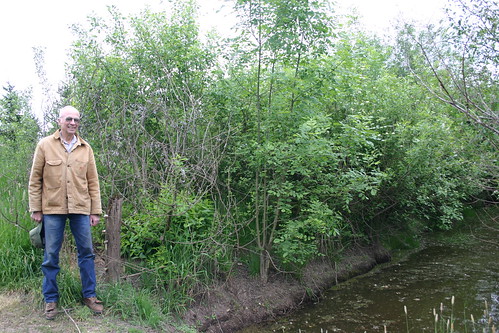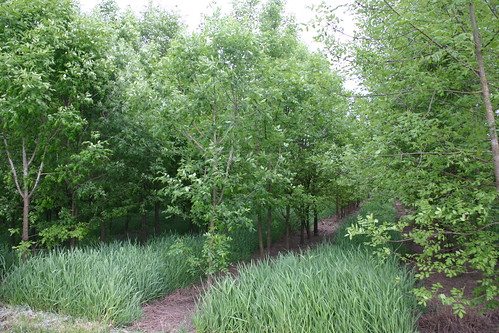
Ralph Duyck is one of 42 landowners who used the Conservation Reserve Enhancement Program (CREP) to protect the Tualatin River Watershed. With the initial goal of restoring fish habitat and cooling the stream, Duyck also noticed an increase in wildlife on his property.
A small group of conservation enthusiasts gathered at Ralph Duyck’s farm near Forest Grove, Oregon with a shared goal. They wanted to protect water quality and fish and wildlife habitat in and around the Tualatin River, an 83-mile tributary of the Willamette River that runs through Portland.
The group didn’t know how much interest they could attract or how much they could achieve—but that was 2005. Today, the Tualatin Basin Partners for Clean Water’s membership includes more than a dozen cities, counties, conservation districts, and environmental groups.
The group’s 10-year partnership, working to restore fish habitat and cool the stream, made USDA’s Conservation Reserve Enhancement Program (CREP) available to Oregon producers to protect the Tualatin River Watershed.
CREP targets high-priority conservation issues by forming a partnership between the federal government and state or tribal governments or other geopolitical bodies. Once a CREP agreement is formed, landowners can receive annual rental payments in exchange for removing environmentally sensitive land from production and implementing acceptable conservation practices.
Now, 42 landowners have enrolled a total of 450 acres into CREP. They’re protecting more than 25 miles of stream bank by planting more than 50 different native plant species planted within the buffers. Invasive and weedy plants were removed and native vegetation was restored to improve stream habitat health and create shade to keep the water cool.
“The first year we had one project, the next year we had three and by the third year we had 27 projects,” said John McDonald, Chairperson of the Tualatin Soil and Water Conservation District. “The agricultural community bought into the project because of the multiple benefits.”
Conservation improvements helped stabilize banks, reduced erosion, slowed and filtered run-off, safeguarded ground and surface water, increased food and shelter for wildlife and pollinators and slowed the spread of invasive weeds.
As part of the program, around 25,000 trees and shrubs have been planted on the Duyck farm since 2005, many of which are Douglas Fir and Western Red Cedar.
Lyle Spiesschaert and his family also participate in CREP and have farmed the same land near Forest Grove Council Creek for almost 100 years.
“We have two miles of streams that flow into the Council Creek drainage area and we have planted all native species, trees and shrubs to help cool and filter the water and provide cover for wildlife, pollinators, bees, birds and insects,” said Spiesschaert. “Sometimes you know what is right, but it is hard to do it economically. This program has allowed us to do the right thing for the environment.”
The Tualatin River Watershed partners participated in the “Tree for All” program which set a goal to plant 1 million trees in the area during 2015. USDA CREP projects contributed nearly 220,000 trees and the goal was surpassed by planting more than 1.2 million trees and shrubs in one planting year.
“This program is a beautiful working relationship,” said Duyck. “Wildlife is coming into the land because there is vegetation and trees for habitat.”

USDA, conservation partners and landowners worked together to protect the Tualatin River Watershed by restoring fish habitat and cooling the stream.
No comments:
Post a Comment
Note: Only a member of this blog may post a comment.